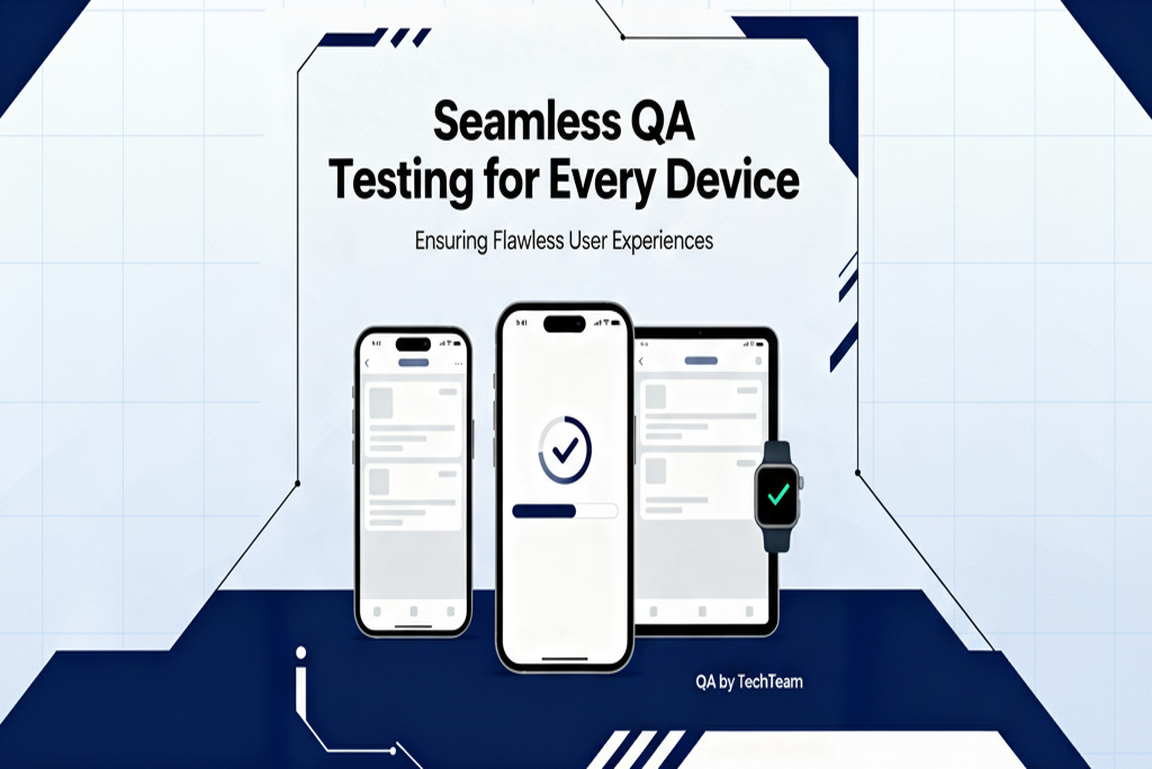
How a BDE Connects Business Vision With Technology
How a BDE Connects Business Vision With Technology Kumkum Kumari 21/11/2025At Speqto, we work with organizations that are constantly evolving entering new markets, scaling operations, or […]


In today’s mobile-first world, users expect apps to work flawlessly on a dizzying array of devices and operating systems. Mobile App QA is the discipline of validating functionality, performance, and usability across smartphones and tablets, ensuring seamless user experiences whether on Android or iOS, high-end flagship phones or budget handsets. Rigorous QA early and often prevents fractured user journeys, poor ratings, and costly post-release fixes.
This article explores how Speqto’s Mobile App QA process—from device selection and test automation to performance profiling and real-world beta testing—delivers rock-solid apps that delight users on every screen.
Mobile fragmentation is a QA nightmare: thousands of device models, multiple OS versions, diverse screen sizes, and varying hardware capabilities. An app that works perfectly on a flagship Android phone may crash on a low-end device or exhibit UI glitches on a phablet. Without comprehensive testing, these inconsistencies undermine user trust and app store ratings.
Speqto implements a layered QA strategy:
• Device Matrix Definition: Identify top device-OS combinations based on analytics and market data.
• Automated Regression Suites: Cover core flows on virtual and real devices using Appium and Espresso.
• Performance Profiling: Measure startup time, memory usage, and battery impact with profiling tools.
• Network Simulation: Test under 3G, 4G, and unreliable Wi-Fi to validate offline handling and graceful degradation.
• Beta & Usability Testing: Real-world feedback from diverse user groups to catch platform-specific UX issues.
Start by analyzing usage data—target the top 20 devices covering 80% of your user base. Include a mix of brand-new flagships, older OS versions, and low-end hardware. Combine cloud device farms (e.g., BrowserStack App Automate) for breadth and an in-house lab of 5–10 high-priority devices for deep debugging.
Automate repetitive regression tests to free QA engineers for exploratory testing:
• Appium: Cross-platform scripts in JavaScript or Python
• Espresso / XCUI: Native Android and iOS UI tests
• Cucumber BDD: Human-readable scenarios drive both platforms
• Detox: Fast end-to-end mobile tests for React Native apps
Use profiling tools to benchmark:
• Startup Time: Aim for sub-2-second cold launches
• Memory Footprint: Monitor heap usage to avoid OOM crashes
• Battery Impact: Track background CPU spikes and wakelocks
• Network Conditions: Simulate throttled 3G and packet loss with tools like Charles Proxy and Network Link Conditioner
Invite a representative group of beta testers on TestFlight or Google Play’s open testing track. Gather crash logs, session replays, and UX feedback to catch device-specific glitches—keyboard overlaps, gesture misfires, or accessibility issues. Integrate in-app feedback prompts to collect context-rich reports.
• Shift Left: Run smoke tests on every commit and nightly regression across key devices.
• Parallelize Tests: Leverage cloud farms to execute suites across 50+ devices in minutes.
• Data-Driven Testing: Drive tests with varied user profiles and locales to cover edge cases.
• Accessibility Audits: Validate screen reader support, high-contrast mode, and scalable fonts.
• Crash Analytics: Integrate Sentry or Firebase Crashlytics for automated error triage and priority ranking.
After implementing our Mobile App QA process, teams report:
• 60% reduction in crash rate
• 50% fewer high-priority support tickets
• 40% improvement in app store star ratings
• 70% faster release cycles due to automated regression
For a major fintech client, Speqto executed full-stack QA across 30 devices. We found a memory leak on an older Android OS that evaded unit tests, and fixed a tap-target issue on iOS 14. The launch saw zero P1 crashes in the first month and a 4.8★ rating across 15,000 reviews.
Mobile App QA is critical to delivering seamless experiences on every device. By combining a targeted device matrix, robust automation, thorough performance profiling, and real-world beta testing, teams can catch platform-specific issues before they impact users. Implement these practices to ensure your mobile app delights users, maintains top ratings, and accelerates release velocity.
Ready to perfect your mobile app QA? Contact Speqto’s QA Centre of Excellence to build a custom testing strategy and guarantee flawless releases on every device.

How a BDE Connects Business Vision With Technology
How a BDE Connects Business Vision With Technology Kumkum Kumari 21/11/2025At Speqto, we work with organizations that are constantly evolving entering new markets, scaling operations, or […]

Apache JMeter Demystified: Your 7-Stage Blueprint for a Seamless First Performance Test
Apache JMeter Demystified: Your 7-Stage Blueprint for a Seamless First Performance Test Megha Srivastava 21 November 2025 In the intricate world of software development and deployment, ensuring a robust user experience is paramount. A slow application can quickly deter users, impacting reputation and revenue. This is where Apache JMeter emerges as an indispensable tool, offering […]

STRIDE Simplified: A Hands-On Blueprint for Pinpointing Software Threats Effectively
STRIDE Simplified: A Hands-On Blueprint for Pinpointing Software Threats Effectively Megha Srivastava 21 November 2025 In the intricate landscape of modern software development, proactive security measures are paramount. While reactive incident response is crucial, preventing vulnerabilities before they become exploits is the hallmark of robust software engineering. This is where threat modeling, and specifically the […]

From Static to Streaming: A Practical Developer’s Guide to Real-time Applications Using GraphQL Subscriptions
From Static to Streaming: A Practical Developer’s Guide to Real-time Applications Using GraphQL Subscriptions Shakir Khan 21 November 2025 The Paradigm Shift: From Static to Streaming Experiences In an era where user expectations demand instant gratification, the web has rapidly evolved beyond its static origins. Today, a modern application’s success is often measured by its […]

The TanStack Query Edge: Deep Dive into Advanced Caching for Optimal Application Speed
The TanStack Query Edge: Deep Dive into Advanced Caching for Optimal Application Speed Shubham Anand 21 November 2025 In the relentless pursuit of seamless user experiences and lightning-fast web applications, data management stands as a formidable challenge. Modern front-end frameworks demand intelligent solutions to handle asynchronous data, and this is precisely where TanStack Query (formerly […]